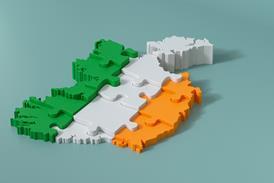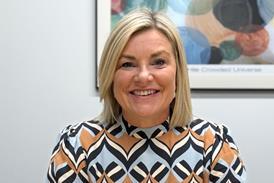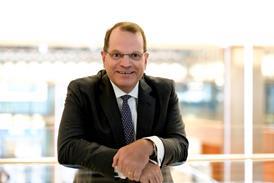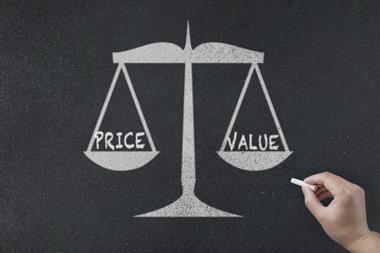After much agonising, insurers have finally decided to raise motor rates. Caroline Muspratt explains the background
Confused about car insurance? It's no wonder with the vast number of companies clamouring for each driver's hard-earned cash.
Given the competition, it's hardly surprising that insurers are squeezing every penny, trying to undercut their rivals and gain more customers. However, premiums have been kept artifically low for years, and insurers are now deciding that enough is enough.
Norwich Union (NU) was the first to warn of significant price increases to cope with the rising cost of claims. It said that on average, customers would see their rates go up by 16%, but that a small number - typically young male drivers - would pay as much as 40% more.
Other insurers welcomed this comment with undisguised relief. Car insurance is probably the least profitable area of general insurance, and it is no secret that the cost of claims is rising.
Andy Goldby, director of motor at Groupama, estimates that claims inflation is running at 5% - 6% a year.
Even as long ago as June, the industry was warning that motor premiums would need to rise.
According to non-life actuary EMB, for every £100 of motor premium income earned during 2005, insurers paid out £81.20 in claims and £27.60 in administration and other expenses, making a total cost of £108.80.
This year, that is expected to rise to £113 paid out for every £100 earned.
Paul Moorshead, senior consultant at EMB, says: "The prospects for 2006 are for a continued deterioration in underwriting results, which means that premiums will have to rise. The only thing that remains to be decided is the timing of any increases."
So now that NU has shown its hand, will other insurers follow suit? '
' Royal Bank of Scotland (RBS), which owns insurers including Direct Line and Churchill, has indicated it could also put prices up. Annette Court, former chief executive of RBS Insurance, says that prices are "unsustainable at the current level, given the rate of claims inflation," and agrees that "prices need to rise".
However, some insurers have taken the opportunity to criticise NU's past approach, even if they agree with the future rate rises.
Zurich marketing director Mark Searles says "We believe NU reacted to the inevitable consequences of its marketing approach in recent years - acquiring customers at unsustainable rates.
"We will continue to ensure that Zurich balances pricing and profitability to avoid swingeing price hikes for our customers.'
Admiral chief executive Henry Engelhardt said recently that he did see increases on the horizon, but added that he had no immediate plans to put prices up.
Engelhardt added that he expected many smaller insurers to wait until the market leaders, including RBS and Norwich Union, have pushed their price increases through before deciding to follow.
Groupama's Goldby admits the company is "a lot less competitive than we were", as it has increased premiums by a small amount "most months".
However, the company is cautious of increasing prices too much and losing customers. "We don't aim to make money out of the policy, we make money from investment returns," he says.
"We price as keenly as we can so we don't make a loss."
According to the AA, premiums are already on their way up - but the increases are still pretty small so far. The AA said in October that car insurance premiums had risen for the second consecutive quarter, with the average premium for an annual comprehensive policy up 1.24% while third party, fire and theft was 4.62% higher.
Sainsbury's Bank recently estimated that it takes over £2,200 a year to keep a car on the road, with insurance the biggest cost after petrol.
While it seems a 'no brainer', some insurers are trying to help their customers keep their costs down - as long as it still benefits their business model.
NU is rolling out its 'pay as you drive' policy which it says could help motorists reduce their premiums, but without meaning NU has to cut its prices across the board.
The new approach will charge drivers based on when and where they drive and could cut premiums by a third. However, younger motorists will be charged more for driving at night, when the chance of an accident is higher.
Royal & SunAlliance recently launched a product called i-kube which will give young drivers a
40% discount on their premiums, provided they don't drive between 11pm and 5am. If they do drive between these hours, they will pay extra. For the moment, i-kube is just being tested in Wales, but if successful it could be rolled out nationwide.
Danny Venner, broker business manager at Royal & SunAlliance, says: "Any benefit we expect to see in reduction of claims costs is passed straight back to the customers in discounts."
He says the company would make roughly the same profit as it would on a standard policy. However, he adds that while there are "very tight margins on motor insurance", there is less competition in the "innovative" part of the market.
There is of course still a benefit to the insurers - by attracting customers with a more tailored product, they are perhaps more likely to remain loyal and continue taking out the policy, even when they are no longer classified as young drivers.
However, people will still shop around. The rise of the internet has meant it is easier for consumers to compare prices themselves, and now there are sites like www.confused.com that will do the hard work on their behalf.
Brokers are still offering their products via these sites and in some cases are setting up their own aggregators. Michael Lawrence, sales and marketing director at Highway, says he knows of several in the pipeline. But the market is changing.
"People will go to aggregator sites to get a quote but with more coming online, people will shop from one aggregator to another," he says.
But no matter how people buy their car insurance, whether it is direct, through brokers or via aggregator sites, the industry seems to agree on one thing - that on the whole, premiums are going to rise. IT




































